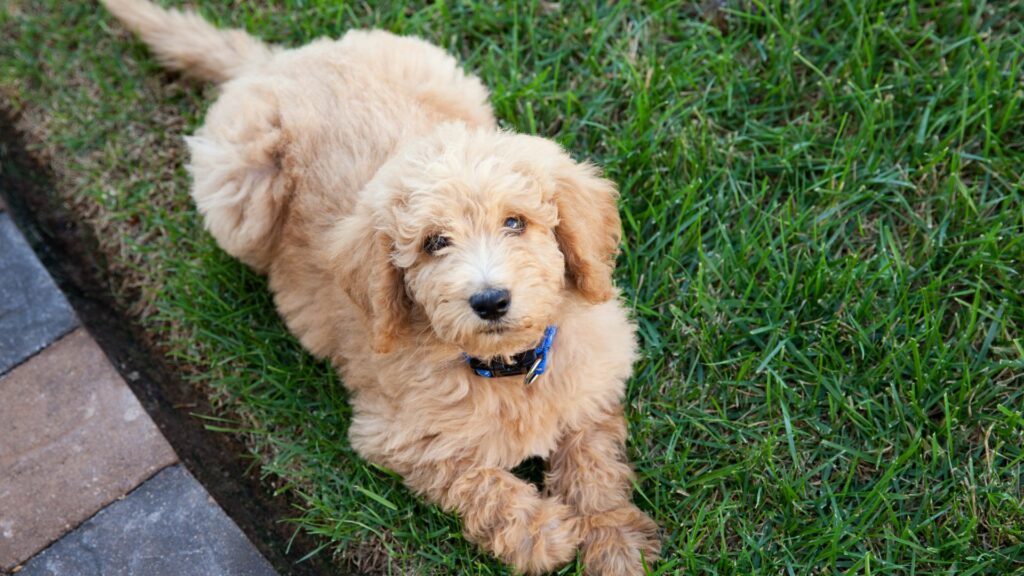Celebrities flaunt Labradoodles all over social media and the craze is spreading to everyday dog owners. But is the fluffy cross between a Labrador and a poodle still a dog, or rather just a hip fashion accessory? And is it a good idea to own one, even if you have chosen the specially created hypoallergenic breed to help prevent sniffles and watery eyes?
In 2014, the University of Durham published a study on the relationship between dog movie stars and the popularity of certain dog breeds. The link was irrefutable. When the Disney classic ‘The Incredible Journey’ (1963) came out, the number of Labradors registered with American veterinarians rose to 2,223 per year. In the ten years before the film's release, there was an average of 452 registered.
They saw similar spikes in popularity in 1996, when the film ‘101 Dalmatians’ appeared on the big screen. Young children were given the spotty dogs en masse as Christmas presents, but as soon as they were 'unpacked', it turned out that Dalmatians are not as cute as the ones in the film: they are hard to train, have a reputation for being snappy and are generally not a good match for families with children.
Jumping on the trend
Movies are a possible explanation for the sudden popularity of some breeds, just like famous people who are spotted with a dog, De Morgen reports. At the turn of the century, Paris Hilton introduced the handbag dog. She invariably carried her chihuahua Tinkerbell in her Louis Vuitton bag. The result was that a generation of would-be 'It Girls' wanted tiny dogs.
And so, something similar has happened to the Australian labradoodle. The breed has been a well-known species since the 1980s, but its popularity explosion didn’t happen until 2009 when former US President Barack Obama brought Bo into the White House as a gift for his eldest daughter who is allergic to dogs. Enquiries with breeders went through the roof after Obama was seen playing with the black fluff ball on the grounds of the presidential home.
Australian Wally Conron, the breeder responsible for creating the labradoodle, immediately knew that Pandora’s Box had been opened. He even wrote to the Obamas advising them against adopting one of the breed.
Frankenstein's monster
Conron developed the breed in 1989. After being asked by a visually impaired woman from Hawaii to breed a service dog that would not cause her husband, who was allergic to dogs, to sneeze.
Conron first tried with poodles, but they were too stubborn to be a service dog. After some thought, he switched to the idea of a base dog with a good work mentality and came up with the idea of creating a Labrador with the fur of a poodle. While the first labradoodle was a success as a service dog, others could not find a home. People found the idea of such a mongrel off-putting.
This changed when Conron combined the two names and hit on a remarkably successful marketing stunt. The Labradoodle was officially born and the new hybrid breed – with its cutesy name and fluffy countenance – caught on. "By crossing those two races, I created Frankenstein's monster," he told Psychology Today. "Breeders have jumped on the bandwagon and are now crossing any dog they can with a poodle, without regard to health risks.”
Genetic disorders and health problems abound
"Some of these poodle mixes have health problems or genetic disorders," explained Conron, who has bred only 31 Labradoodles himself, after careful genetic testing. "There are a lot of poodle crossbreeds that have problems with their eyes, hips and elbows, and a large percentage have epilepsy."
"Labradoodles do not suffer from their appearance, as many short-snouted dogs do, but they do suffer from hereditary diseases,” he lamented.
“Their gene package ensures that they have a high chance of developing von Willebrand's disease, a hereditary blood disorder that can cause heavy bleeding," Eva Bernet Kempers, who conducts postdoctoral research on animal rights at UAntwerpen, told RTBF. "In addition, they often have dysplasia of the elbow and other joints, which can cause them to become deformed."
The hypoallergenic labradoodle is more than just a sales trick though and has helped many people with allergies to enjoy having a pet dog, but if you're severely allergic, experts advise you to consider a hairless pet.
Related News
- Vets offer advice as cases of poisoned pets continue to rise in Belgium
- Over 182,000 dogs and cats registered in Flanders last year
"Actually, there are no hypoallergenic dog breeds," Jan Paeshuyse, professor of bioscience engineering at KU Leuven and head of the animal and human research portal, told RTBF. "All dogs secrete allergens, especially through their saliva and dander. The type of coat determines how many of those dander end up in the environment through hair loss.”
"A dog with a curl in the coat, such as a labradoodle, usually loses fewer hairs. This is mainly due to the poodle in the mix. A poodle loses little hair and does not drool. But if you're allergic, ask the breeder if the dog has been tested for the MC5R gene, a protein that determines a dog's ability to shed.”
All experts say that extensive research on breeders should be undertaken before buying any dog, particularly one that is crossbred for a purpose such as the labradoodle.

